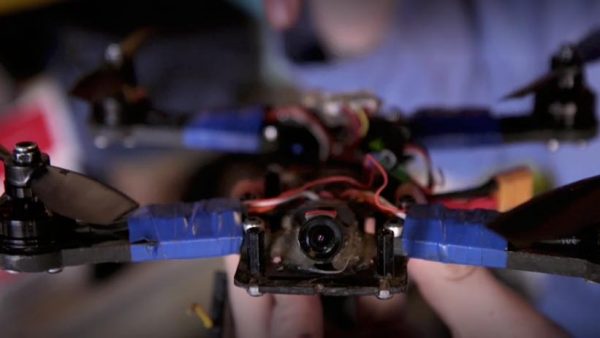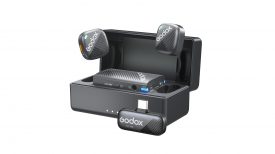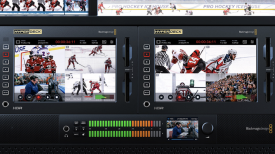Drones are often in the news for the wrong reasons, so it’s nice to see the occasional piece that goes a little deeper and explores the culture emerging around DIY aviation, as with Erik Olsen’s recent piece for the New York Times. Here’s Erik to tell the story behind the story in his own words…
A few months ago, I saw a video online featuring the jaw-dropping aerial acrobatics of a drone pilot nicknamed Charpu. I have long been fascinated by the emergence of drones and drone culture, but the things Charpu was able to accomplish flying his drone took my breath away. I immediately knew there was a good story here.
As it turns out, Charpu, whose real name is Carlos Puertolas, is part of an emerging, and rapidly growing, new sport called drone racing. Drone racers use so-called first-person-view video to pilot their small drones around, well, pretty much anywhere. First person view is a relatively new phenomenon, or at least, it is new in that the technology to use it while flying a hobbyist drone is now actually affordable. I started looking around at the new sport, going to places in Van Nuys where drone racers practiced and visiting hobby shops. I realized that this sport is going to be big.
So on and off for a few weeks, I followed the drone racing community here in Los Angeles to learn more about it and to capture the passions of its participants. I went to several of the qualifying races of the International Drone Racing Associating, a group of about 500 pilots that is trying to make drone racing a viable sport. There are many other leagues sprouting up, but the one here in LA is one of the largest. I met Charpu, and a wonderful guy named Keith Robertson, as well as many other racers, and followed them to the finals of the California Cup, which was held last month in Pomona.
Most everyone compares it to scenes of pod racing in the Star Wars movies
The result of my reporting is this print and video combination that ran in the Thursday sports section of The New York Times.
In spite of its obvious allure as a competition – most everyone compares it to scenes of pod racing in the Star Wars movies – it is actually very difficult to capture in video. The drones are very small and they move fast. Some can go 70 mph.
I filmed mostly with the Canon C100 Mark II and several GoPros (Hero4 Silver) mounted around the courses where I shot, as well as on the drones themselves. The FPV video that is broadcast from the drones themselves is in standard def and there can be a lot of radio interference, so it doesn’t really work well to tell the story. While the drones are quite small, they can nicely accommodate the GoPro and there are all sorts of mounts available for the drones to use. The footage from GoPros (some of which I also got from racers themselves) is mesmerizing and, for obvious reasons, makes up the bulk of the story.
Thankfully, the race organizers gave me free reign to roam the courses, so I often set up at gates and tunnels where I knew drones would have to fly low and would often crash. Even then, the shots are often difficult to get and I ended up with a ton of footage that I couldn’t use. A tripod was a necessity for most shots. Following the drones as they perform stunts high in the air was nearly impossible.
Interestingly, the final shot of the story, a drone flying through frame in super slow-mo, was shot on my iphone.
Of course, I wanted to film some of the competitions and practice from my newly acquired Phantom 3 professional, but the FAA regulations currently forbid the use of drones for commercial purposes, which includes journalism.

I immensely enjoyed producing this story. Before moving to Los Angeles three months ago, I was the New York Times Senior Video Journalist in Europe, and in many ways, filming drone racers was a welcome break from producing stories in Ukraine and Greece under very challenging, stressful and often dangerous conditions.
Drone racing will get bigger, no doubt, and the organizers and leagues are just now figuring out ways to make it easier for spectators and journalists to cover the sport. They have a long way to go, but I think my story helped bring some national attention to something that will now be around for a long time to come.





